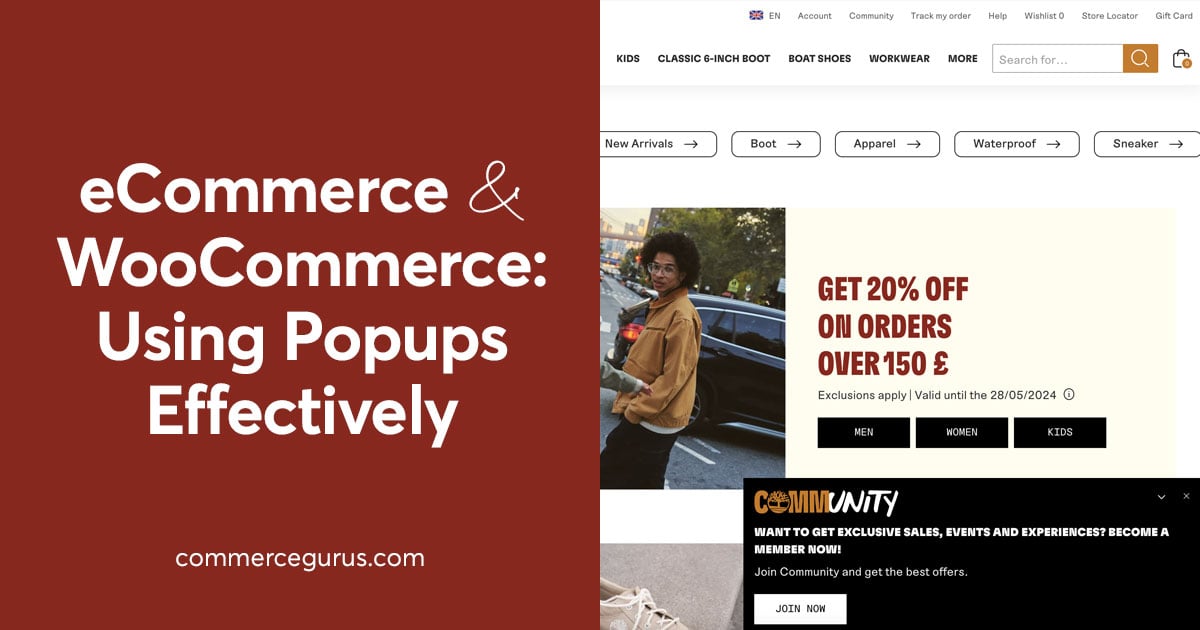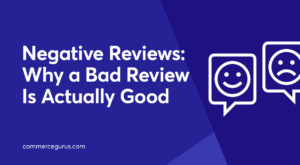There’s never been a better time to get started with selling online. In 2014, it’s possible for just about anyone to get an online store up and running in a matter of minutes. As an old man in internet terms this was simply unthinkable 10 years ago. Even 5 years ago your options were quite limited. Today you have almost too many options to choose from.
Today I want to take a quick look at the most popular eCommerce platforms in use in 2014. It should be noted that any online statistics regarding platform popularity should always be taken with a large pinch of salt given how hard it is to produce reliable metrics for measuring platform popularity. They do however act as an excellent barometer for which way the wind is blowing in terms of platform trends and should help us understand which platforms store owners are moving towards.
Builtwith.com tracks the internet at a macro level to determine what platforms are in use to power websites. Thankfully they produce an eCommerce segment which is a veritable goldmine of information about what is happening in eCommerce today.
The top 10 eCommerce platforms in the world*
* The top 10 eCommerce platforms in the world are measured by builtwith.com. We’re also looking at their numbers for the “Entire Web”. Builtwith.com aslo produce stats for Top 10k, 100k and 1 million sites.
Number 10 – Amazon Webstore
It’s no surprise to find Amazon Webstore in the top 10. The only surprise is that it’s not higher up the list. For many people Amazon is eCommerce. Amazon Webstore basically allows you to leverage the massive infrastructure Amazon has built to create your own shop. Big brands like Samsonite, EA Sports, Fruit of the Loom, MTV, Black & Decker and Spalding use Amazon Webstore. At first glance one might think the whole world should be using Amazon Webstore, so why is it not more popular? I think there’s 2 key reasons. First, it’s a hosted platform, and for a lot of businesses that’s a non-runner for a myriad of reasons (hosted vs. self hosted is something we’ll come back to another day). Second, it can get quite expensive quite quickly. It’s $79 per month along with 2% of each transaction for Small businesses. One significant benefit of using Amazon Webstore is the ability to get your products seamlessly displayed on Amazon.com and offer Amazon Prime to your customers. For many store owners the costs are small compared to the benefits that come with it.
Number 9 – AspDotNetStorefront
This is one we were surprised to see in the Top 10. AspDotNetStorefront has been around a long long time. It’s a commercial piece of software written in Microsoft .NET (c#) so naturally it will appeal to those looking for a self hosted platform on the Microsoft stack. Prices start at $797 for the express version (100 product limit and a smaller feature list) and go up to $4,794 for the Enterprise version. It certainly boasts an impressive feature list but I must say I don’t like that the Express and Professional versions are seriously hobbled in terms of restricted feature lists. I also think that the visual aspect of the platform could be significantly improved compared to others on this list.
Number 8 – Magento Enterprise
Magento, the 1,000 pound gorilla of the open source eCommerce world, makes it’s first entry in the Top 10 here in it’s Enterprise form. Magento has pretty much dominated a significant chunk of the eCommerce market since it first appeared in 2007. Magento Enterprise (EE) provides an expanded and enhanced feature set from the community (free) edition and also provides the comfort of an enterprise support team which big brands demand. But that comfort comes at a price. Until very recently Magento displayed their enterprise pricing on the enterprise website but they seem to have removed them recently. As of June 2014, Magento Enterprise costed around $15,000 per annum. We’ll talk a little bit more about Magento later but suffice to say, Magento Enterprise is squarely aimed at store owners doing serious annual turnover online. On top of the $15,000 per annum license, you’re probably talking anywhere between $100,000 – $200,000 in implementation costs aswell.
Number 7 – Miva Merchant
Miva Merchant has been around nearly as long as the world wide web itself. It started life back in 1996 as the HTMLScript corporation and has undergone several acquisitions and buy outs in the intervening 18 years. Miva is a hosted eCommerce platform written in it’s own proprietary scripting language called Miva Script. Featured stores include Taylor Swift’s store, Screens.com, ScotteVest.com and Skiphop.com. Miva Merchant pricing ranges from $49.95 per month to $129.95 per month depending on the size of your business.
Number 6 – Yahoo Store
My guess is that had I made this list 10 years ago, Yahoo Store probably would have been in the top 2. In 2014, Yahoo Store is still an incredibly popular eCommerce platform and one of the oldest eCommerce platforms still in existence today. It started life as Viaweb which was founded by the legendary Paul Graham who sold it to Yahoo in 1998 when it was renamed Yahoo Store. Having used Yahoo Store many years ago I can vouch for the platforms biggest strength – it’s simplicity. Yahoo Store pricing is quite sensible and transparent, starting at $10.95 per month for up to $12,000 per month in sales and topping out at $254.95 per month for more than $80,000 per month in sales. I suspect that with the Yahoo brand stagnating significantly over the past 10 years that we’ll continue to see Yahoo Store slip down the Top 10 over the next few years unless Yahoo breath serious new life into the Yahoo Store brand.
Number 5 – Volusion
Volusion is another of the old stalwarts of eCommerce platforms. Founded in 1999 it is unlike Yahoo Store in that it continues to rapidly grow in popularity in 2014. The company has grown from 135 employees to over 450 employees in past four years alone. In the same time, it’s customer base has grown from 18,000 stores to 40,000 stores – that’s serious growth. Flagship customers include Intel, 3M, Kingspan and Combi. Pricing ranges from $15 per month to $135 per month with staggered feature sets depending on the level of sophistication you need. Volusion do an excellent job on their website marketing and have clearly put a lot of effort into identifying where they think their platform is superior to competitors like Shopify. I’m impressed by Volusion.
Number 4 – Ubercart
Ubercart is one of the most popular eCommerce platforms that integrates directly with Drupal (one of the most popular open source Content Management Systems). Ubercart faces stiff competition from Drupal Commerce which has the backing of Commerce Guys who recently raised $7.3 million in funding. Clearly there’s a big market for Drupal based eCommerce platforms! Ubercarts high placement on the top 10 is probably a reflection of the fact that for a long time it was the best Drupal eCommerce option. I’m not so sure if that is the case today. I also think that their less polished website probably doesn’t help convince some store owners that Ubercart is the right platform for them. Nevertheless, it’s continued high placement on the top 10 means Ubercart needs to be given full consideration.
Number 3 – osCommerce
Ah osCommerce, how do I love thee? osCommerce was started back in 2000 and was my first eCommerce platform way back then. For a long time, osCommerce was pretty much the only option a web developer had in terms of open source PHP eCommerce platforms. While osCommerce is still actively being developed I think that it’s somewhat stuck in the past. Certainly from a marketing perspective and in terms of the user interface used to power both the frontend and the backend. I think osCommerce makes it into the Top 3 purely based on the fact that it’s been around for so long and I reckon every single PHP developer has at least one instance of it installed somewhere. I would not recommend using osCommerce in 2014 unfortunately. Here’s to hoping they up their game in the next year.
Number 2 – Magento (Community Edition)
Frankly it’s a big surprise to me that Magento didn’t take the number 1 position! I guess the fact that it occupies 2 of the top 10 slots should be some form of consolation! When Magento was released in 2007 it really did change the game of open source eCommerce platforms. Up to then osCommerce was what most open source eCommerce developers used. Magento was different. It was one of the first open source projects to have a really polished feel to it that simply didn’t exist with open source software up to that point. It was a real breath of fresh air for eCommerce developers. I also think that the company behind Magento, Varien Inc. were also instrumental in showing other developers how to go about commercialising an open source project. Varien was eventually fully acquired by eBay in 2011. Simply put, Magento is a monster of an eCommerce platform. It’s used by hundreds of thousands or store owners to process probably hundreds of millions if not billions of dollars of online orders every year. Yet, it’s not a platform I typically recommend anyone just getting started in eCommerce. Why? Magento is a complex beast. It’s feature set is vast. With such a vast feature set comes a lot of complexity. Moreover from a developers perspective, the process of implementing custom design and functionality on top of Magento is not a trivial one. Magento implementation projects typically run to well over $100,000 despite the fact that the Community edition is free. I generally recommend that unless you’re doing over $1 million in sales per annum online and have at least 1-2 people who know Magento very well you should avoid it for now.
Number 1 – WooCommerce
Now that was a surprise! When we started creating this list we assumed WooCommerce would feature somewhere in the top 10 but never guessed it would now be the Number 1 eCommerce platform in the world! It’s been a bit of a stellar rise for WooCommerce given the platform was only released in September 2011. For those who’ve never heard of WooCommerce before, it’s an open source plugin for WordPress (the most popular open source Content Management System in the world). WooCommerce had a bit of a baptism of fire as it’s 2 main developers at the time Mike Jolley and Jay Koster were previously the developers of Jigoshop which was forked to become WooCommerce when WooThemes hired Mike and Jay. Once under the WooThemes banner, WooCommerce rapidly emerged as a really powerful but simple eCommerce platform. As a WordPress plugin, WooCommerce inherits the principles and ethos of WordPress in terms of it’s general user interface simplicity while still providing a core feature set that competes with any of the other platfoms listed here in the Top 10. There are numerous reasons why WooCommerce has risen up the Top 10 list so rapidly, but I think the biggest reason is it’s seamless integration into WordPress. I also think the extensive marketplace of themes and plugins for WooCommerce means it can compete with the likes of Magento without the significant resource and implementation overhead.
Also rans who didn’t make the Top 10
- Zen Cart – A very popular fork of osCommerce. A bit surprised to see no trace of Zen Cart even though it’s definitely showing it’s age a bit.
- Shopify – I was sure to see Shopify in the Top 10. It does appear as Number 1 in the Builtwith.com Hosted eCommerce list, but not in the overall Top 10 – while Volusion – a hosted platform – does. Weird, we’ll reach out to Builtwith.com and see if there’s an issue with their overall Top 10. If Shopify was to appear in the overall Top 10 it would be coming in around number 4 which would make much more sense 🙂
- Prestashop – Prestashop is an incredibly popular open source PHP eCommerce platform. I can’t believe there’s no trace of it whatsoever in the Top 10.
- BigCommerce – Another big hosted platform that’s been doing very well recently. Perhaps next year we’ll see them on the list.







 Negative Reviews – Why a Bad Review Is Actually Good
Negative Reviews – Why a Bad Review Is Actually Good Adding an extra Product Tab in WooCommerce
Adding an extra Product Tab in WooCommerce How to setup WooCommerce Mega Menus with the Captiva theme
How to setup WooCommerce Mega Menus with the Captiva theme eCommerce Trust and Credibility: How to Win Customer Confidence
eCommerce Trust and Credibility: How to Win Customer Confidence
1 Comment